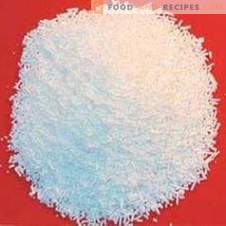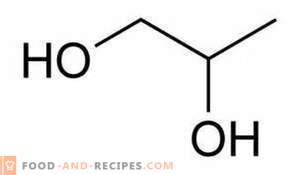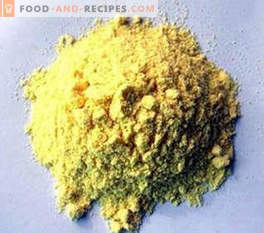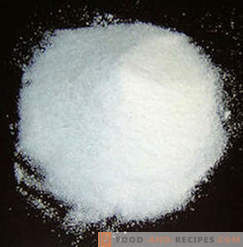
On the shelves of modern cosmetic supermarkets, the assortment of goods is quite varied, with many buyers meticulously studying the composition of detergents and cosmetics before purchasing. After a detailed study of the ingredients in the composition of the product, a substance with the complex name sodium lauryl sulfate is of interest. The composition of many shampoos, toothpastes, detergents, shower gels include this surfactant.
Main active ingredient of detergent
Sodium lauryl sulfate is obtained from coconut oil, it is actively used by cosmetic companies to add to cosmetic cleaners, detergents. It is this inexpensive remedy that provides the cleansing effect of skin care products, hair, facilitating the penetration of active additives through the epidermal barrier. An increase in the permeability of the stratum corneum helps the active nutrients of the shampoo or shower gel to penetrate the hair structure or skin cells without remaining on the surface.
Negative effect after using detergent with surfactant
Unfortunately, the harm from the use of sodium lauryl sulfate is somewhat greater than the benefit. This is due to the fact that this surfactant interacts with keratin fibers, while significantly violating their structure. Shampooing with sodium lauryl sulfate shampoo not only cleans the hair, but also takes away the beneficial substances from its composition. As a result, the hair becomes brittle, dull. The scalp dries out, flakes, signs of seborrhea appear. Many problems with the scalp and hair appear as a result of regular use of the detergent with sodium lauryl sulfate to care for the scalp and hair. Hair loss, changing the structure of the hair, slow growth - this is an incomplete list of problems that sodium lauryl sulfate is capable of delivering to its appearance.
Is sodium lauryl sulfate harmful to everyone?
Beauticians caution against the continued use of shampoos based on surfactants, however, this prohibition does not apply to all. Sodium lauryl sulfate is able to penetrate the structure of the hair or scalp only if the hair is damaged or there is damage, even minor damage, on the skin. This applies to those who weaken the hair structure by dyeing, perm, lightening. In these cases, choose a shampoo for washing the head should be very careful, after examining the composition. If the composition contains sodium lauryl sulfate, then you can use this shampoo no more than twice in a row, then you should use a shampoo of a more expensive series, without surface-active additives. Cosmetologists recommend alternating the use of shampoo with surfactants with natural ingredients: egg, kefir, mustard powder. The consumer should pay special attention to the presence of antioxidants in the form of vitamins A, E, which neutralize to some extent the destructive effect of sodium lauryl sulfate in the detergent.
Another side effect of sodium lauryl sulfate
Active consumers of surfactant-based shampoos note that hair began to grow fat and get greasy faster, despite the fact that the hair is well washed off and excess fat is removed from it. Cosmetologists say that this happens because the greasy layer on the hair is, in fact, a natural protective barrier against damage. With the dissolution of the fat protection of the hair becomes vulnerable, the body begins to actively secrete sebum to protect the hair, which is why the hair quickly becomes greasy after shampooing with sodium lauryl sulfate. Those clients who complain about the increased fat content of the head, cosmetologists recommend using another shampoo for washing the head. In addition to surfactant, it should contain natural oil to protect the hair: jojoba oil or coconut oil. Washing with this product stimulates the exchange of fats between shampoo and scalp, so the hair structure is not damaged, natural protection is not destroyed.
Myth about the penetration of surfactants into internal organs
Recently, you can hear the information that sodium lauryl sulfate penetrates through the scalp into the body and is carried by blood. Getting into the liver, kidneys, other organs, this substance causes cancer tumors. Laboratory studies do not confirm this information, since in order for sodium lauryl sulfate to enter the body in such an amount, the shampooing procedure should be carried out every 6-8 hours. However, experts recommend that when washing your hair with a shampoo with a surfactant, additionally protect the scalp, after wetting it with water and wait about five minutes. The scalp becomes impenetrable after moisture, therefore, sodium lauryl sulfate does not penetrate into the body through moist skin.
Sodium lauryl sulfate and children
Manufacturers of products for childcare are practically not used in the production of children's detergents and cosmetics. Sodium lauryl sulfate is a fairly aggressive substance, so for children it is also used rather active, but softer tool called sodium laureth sulfate. However, if parents continue to fear for the health of babies, then they should study in detail the composition of children's skin care products and choose one that does not contain sodium lauryl sulphate or sodium laureth sulphate.























